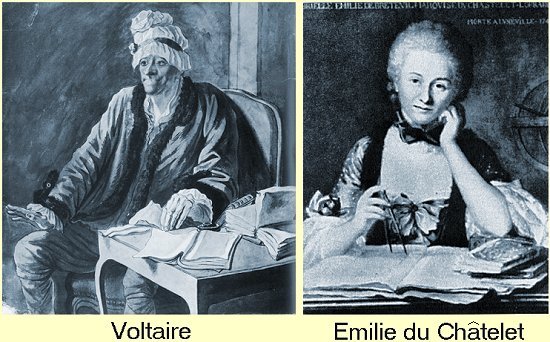E. M. Forster & Thermodynamics
Today, E. M Forster, Voltaire, and thermodynamics. The University of Houston's College of Engineering presents this series about the machines that make our civilization r un, and the people whose ingenuity created them.
We know E. M. Forster for his fine novels: A Passage to India, Howard's End, and many more. I've just been reading a section on Voltaire's Laboratory from his book, Abinger Harvest. As a writer, wit, and thinker, Voltaire helped put France on the road to revolution. He's been called the High Priest of the Enlightenment.
But Forster takes us to the spring of 1737. Here is Voltaire working with a fine amateur zeal at the problem of determining the substance of fire. Scientists imagined that a substance called phlogiston was liberated during combustion. But what was phlogis-ton? Certainly no one had ever seen it or bottled it.
Now a prize is being offered for the best paper on The Nature and Propagation of Fire, and Voltaire has joined the competition. Four years earlier, he'd taken up an affair with a married aristocrat, Emilie, Marquise du Châtelet. Emilie was a brilliant, self-taught scientist and mathematician, and she's drawn Voltaire into her passion for science. At the moment they're both studying heat.
Forster talks about the flailing amateur quality of their ex-periments. They lay thin slices of small tree trunks on a red hot plate and wonder why one takes longer than another to burn up. They weigh a lump of iron, heat it red hot, cool it, and reweigh it. They accumulate facts, and, all the while, they bicker and they burn the midnight oil.
Emilie's husband was completely aware of their relationship, and he seems to have suffered it willingly. Forster scratches his head over the twelve-year liaison, and finally says of Voltaire:
He was not a lover -- he had all the ingredients that make up love, ... tenderness, pity, lust, selfishness, unselfishness, but they never combined: he was a chemical experiment, which, if love be the desired result, may be said to have failed.
That was similar to the failure suffered by Voltaire's fact-and-data-filled paper on heat. The judges divided the prize among others who'd taken a more theoretical tack. Emilie didn't win the prize either, but her submission stands up best of them all in hindsight. Small wonder: The creation of a correct theory still needed far more facts. A century later, it became clear that heat isn't a substance at all. It's a condition of matter.
Emilie had meanwhile made the first translation of Newton into French, and Voltaire had become Newton's prophet in Europe. He used the character Pangloss in Candide (which he wrote with Emilie looking over his shoulder) to ridicule Newton's competitor, Leibnitz. The irony of that is, Leibnitz had already suggested the correct description of heat just one year after Voltaire's birth.
But Forster's story is about the complexity, not of heat, but of Voltaire. Under Emilie's influence Voltaire ultimately became one of the great popularizers of science. And, in drawing the public in -- even as Emilie du Châtelet had drawn him in -- Voltaire contributed enormously to eighteenth-century science.
I'm John Lienhard, at the University of Houston, where we're interested in the way inventive minds work.
(Theme music)
Forster, E. M. Abinger Harvest. New York: Harvest Books, 1966, pp. 204-218.
I am most grateful to Drexel Turner and Margaret Culbertson, UH College of Architecture, for drawing my attention to the Forster article. Margaret Culbertson, and Robert Zaretsky of the UH Honors College, provided additional counsel.
For More on Emilie du Châtelet, see Episode 219.
